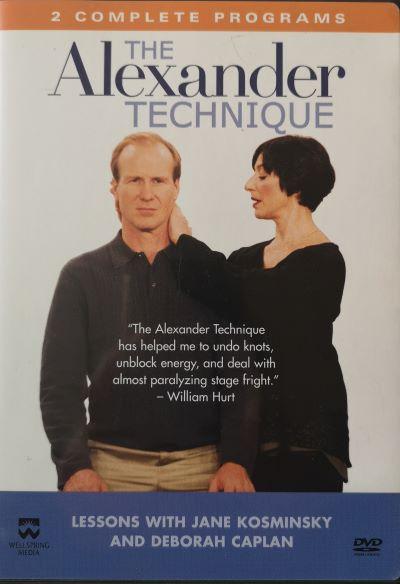Anxiety and Stage Fright
The Alexander Technique is well known for helping with our posture and with back problems but not so many people realise it is a useful tool to use in conditions of stress and anxiety. There is a lot of anecdotal evidence of this and I personally know that it can help, from my own experience. However, there is little scientific evidence as yet to support this idea. Some people that have for years found the AT can help with anxiety, are musicians and other performers, who have found the Technique invaluable to them in coping with stage fright.
William Hurt is one such artist who uses the AT to help with performance anxiety as quoted on the DVD shown below.

It’s not just performers that can benefit from the calming aspects of the Technique – we all can. Almost everyone experiences anxiety at some point in their lives and the strength of anxiety can range from situations when we are just mildly worried about things, through to conditions such as performance anxiety, panic attacks or post traumatic stress disorder.
Using the Alexander Technique during an eye operation.
A pupil of mine mentioned that she sometimes has panic attacks and one of the things we have been working on in lessons is the idea of not reacting to anxious thoughts by tightening up her muscles and restricting her breathing. This not only helps reduce tension but can help to stop the anxiety from building up.
Shortly after starting AT lessons, this pupil had to have an eye operation for which she was sedated but only to the level where she could still talk – and she could still see the surgeon as he was performing the operation. This understandably lead to her feeling a bit anxious but she was pleased to be able to tell me that “When I used the Alexander Technique, I stopped myself from having a panic attack during the eye operation”.
It was quite impressive for her to be able to use the Technique so well after just 5 lessons. Fortunately, she was asked to lie down in the semi-supine position for the operation and the fact that she had been practising the AT lying down procedure regularly, in this position, would undoubtedly have helped her to remember what she had learned in her Alexander lessons. My pupil found she could use the AT during the operation in order to help herself stay calm, so that she avoided building up lots of tension and was able to keep her breathing more regular and easy. It also helped her that a nurse sat and held held her hand throughout the operation, something we could happily see more of in the NHS.
At the Dentist…..
Another excellent time to use the AT is when we visit the dentist, where people experience different levels of discomfort and anxiety whilst receiving treatment. It can be very tempting to pull our head back with loads of tension in the neck, whilst holding the jaw open stiffly during dental procedures. However, we can use the Technique to keep our jaws more free, to look after our necks and backs and to help ourselves be calmer as we lie in the dentist’s chair.
Another bonus is that it’s helpful to have something else to think about, other than the drill or whatever bit of metalwork is filling our mouth at the time!
After a diagnosis of long-term illness
It can be very reassuring to know that we can use the Alexander Technique to help us cope with a huge range of different situations and conditions.
“My aching legs, though, were the precursors of a more serious, long-term endocrine condition. My energy, memory, and stamina were affected and I had constant muscle pain. I continued with AT which helped me to cope with the worst. Lying in the AT position made it less necessary to take pain-killers and helped me to be more calm and not to panic about the future of this illness”.
Individual lessons are regularly available. You can contact me here.